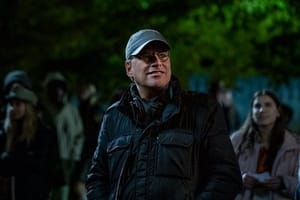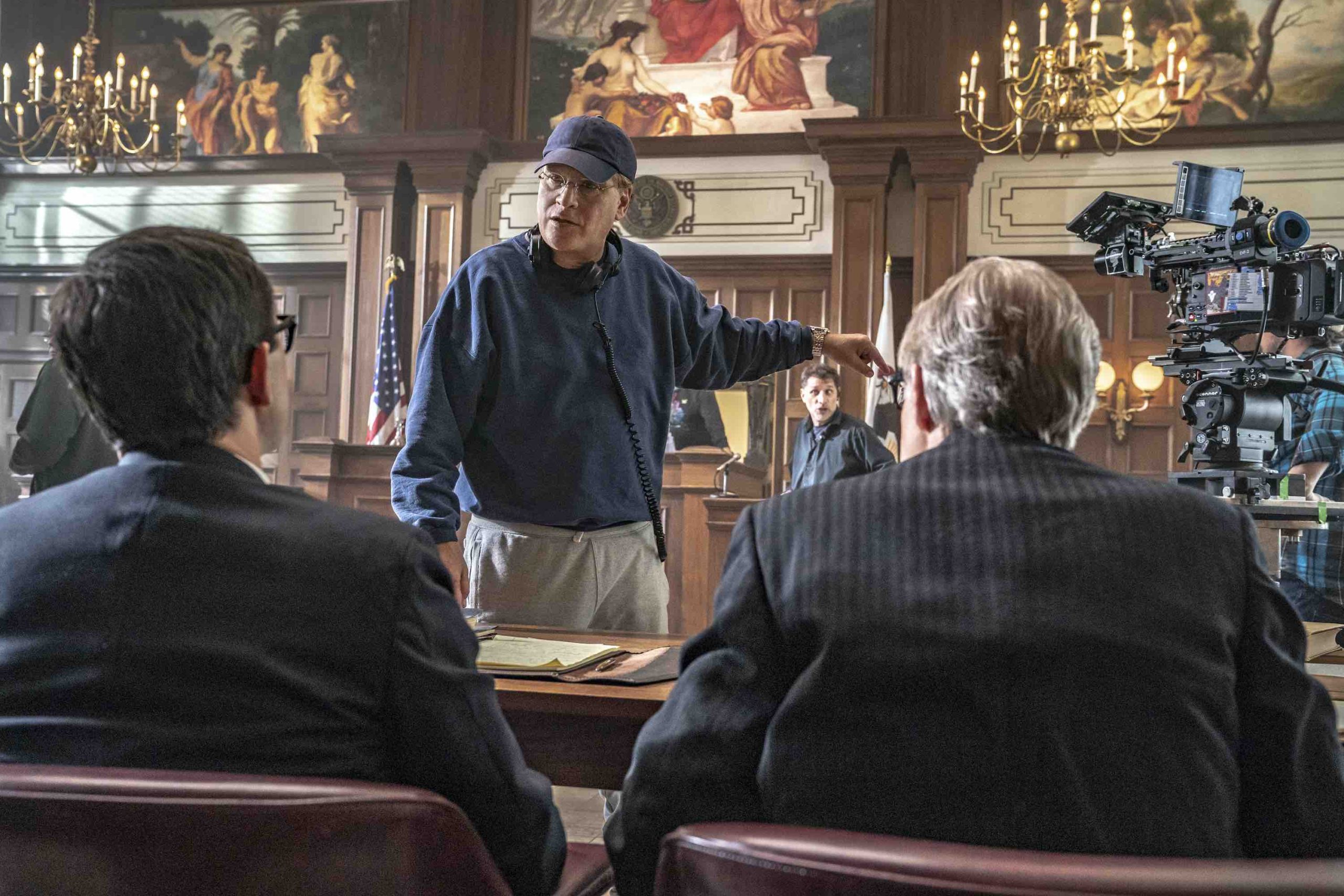
‘We See the Shark Exactly When We Should’
The courtroom where much of this drama takes place was built inside a school in Paterson, New Jersey, but the riot scenes were shot on location in Chicago’s Grant Park.
“The big reason why the movie had a hard time getting made was those riots,” Aaron Sorkin says. “They were budget busters.”
But he and Phedon found a unique solution. “Because we were shooting it in Grant Park where the riots actually happened, we could find news footage that fit perfectly with what we were doing. We weren’t going to try to pretend that news footage… was original footage. So we desaturated it into black and white, and we got some wide shots. But mostly what I wanted were very tight shots: just a shot of a face right before a nightstick crashed into it, blood, a tear- gas canister hitting the ground — that kind of thing mixed in with a few wide shots. Because of all the smoke from the tear gas we were able to make it look like there’s a lot more people than there are.”

Aaron Sorkin shares a moment with the prosecution.
Some of that archival film footage is actually Haskell Wexler’s footage from the 1969 drama Medium Cool, which was shot in the summer of 1968 in Chicago and combined dramatized scenes with footage of real events.
Also read: Aaron Sorkin is ‘Surprised There’s Never Been a Robert Moses Movie’
Papamichael and his team captured their own documentary-like footage: “I would send my two camera operators handheld, into our crowd of extras in our re-creation — just submerge them in the crowd and tell them they’re making a documentary about what’s happening: ‘You’re out in the field. You’re part of an actual news team.’ And, of course, we only have 150 extras, 200 at most, and there were 10,000 people in the park in 1968, but it helps, sticking them in the crowd, and not getting too many cinematic wide objective shots, but really creating a feel for what it felt to be in that park that day.”
Aaron Sorkin says he was so pleased with the result that he would take the same approach again, even if money weren’t an issue. He feels strongly that creative constraints help creativity. “When you’re doing a play, a movie, writing a song, something in the creative process has to happen out of necessity, usually for budgetary reasons, and you come up with something that turns out to be what you would have done if you had an unlimited budget. Obviously, the classic example is Steven again, with the shark not ever working in Jaws, so they had to shoot around the shark, and we see the shark exactly when we should, at the end of the second act.”
Sorkin cites another example.
“On The West Wing, every once in a while, someone would come into my office, tell me how much over budget we were for the season, and say, ‘Can the next script be a bottle show?’ — meaning no new sets, no locations, no guest cast, no extras. I think a lot of people would feel handcuffed by that. I feel great when that happens, because now I’ve started. I know that the whole thing has to take place on our set, which is the White House, there are no extras. It can be night or weekends. It’s going to be like a play; it’s going to be enclosed. And those usually turned out to be our best episodes.
The Trial of the Chicago 7, written and directed by Aaron Sorkin, is now streaming on Netflix. Photos by Niko Tavernise. This story was originally published on October 15, 2020, and has been updated.
Share:

